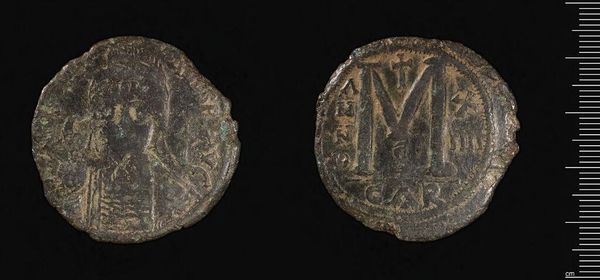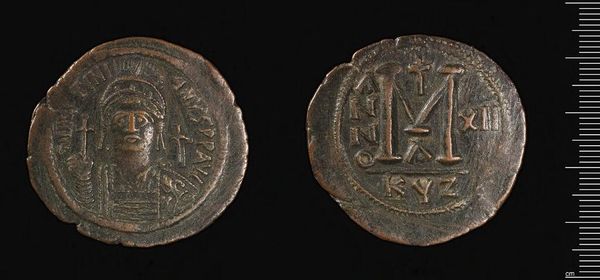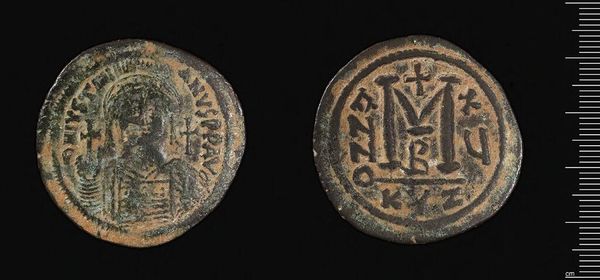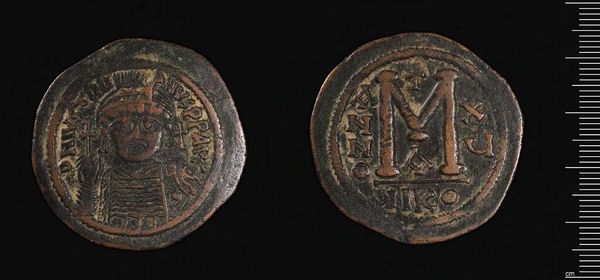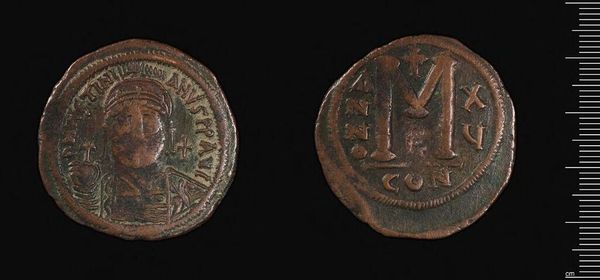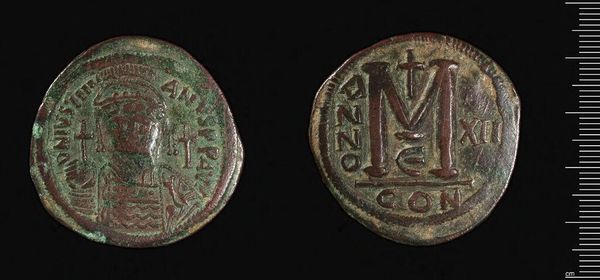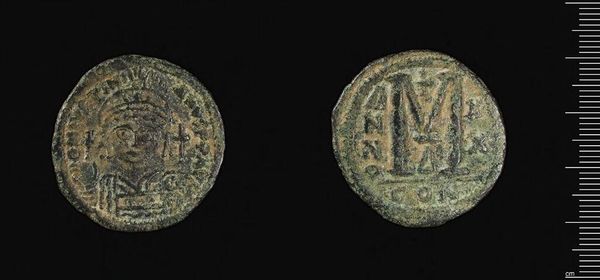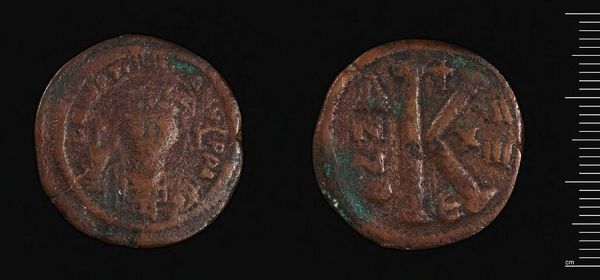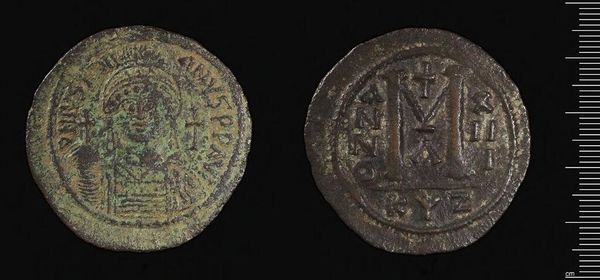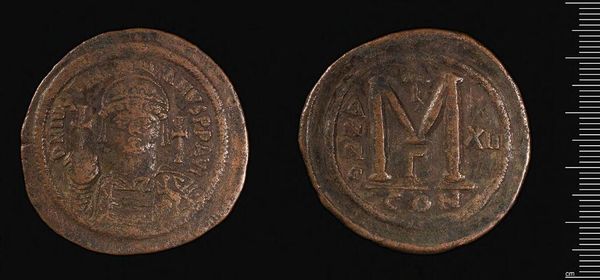
Dimensions: 22.72 g
Copyright: CC0 1.0
Curator: Here we have a coin of Justinian I, a copper piece held in the collections of the Harvard Art Museums. Its patina suggests a long and complex history. Editor: It’s compelling, isn't it? The verdigris lends the object a sense of temporal depth, almost as if it were exhumed from the very foundations of history. Curator: The coin’s obverse features Justinian, depicted with clear Byzantine imperial regalia, while the reverse showcases a large "M," possibly indicating the coin's value or mint. Editor: Look closely at the coin's reverse; the "M" flanks the inscriptions. How do we decode its significance? It's a symbol of power and fiscal authority, particularly for the Eastern Roman Empire. Curator: Absolutely. The formal arrangement around the "M" and Justinian's iconography on the obverse adhere to a strict imperial visual language. It is all about the semiotics of rule. Editor: And it speaks to how rulers like Justinian used material culture to propagate their authority, connecting the divine right of kings to everyday economic life. It seems such a small object, but its social weight is enormous. Curator: Indeed. The coin, through its design and material, echoes the complexities of power and faith in Justinian's era, a tiny window into a vast empire. Editor: Considering its age, it makes you reflect on how symbols of power persist and evolve, echoing through millennia.
Comments
No comments
Be the first to comment and join the conversation on the ultimate creative platform.
